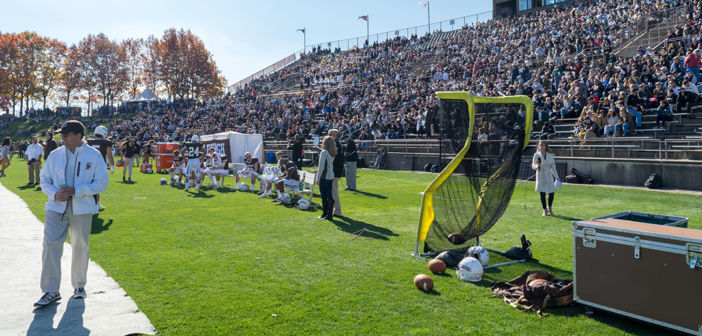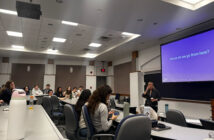Senior quarterback Nick Shafnisky said he is excited about attendance he’s seen at Goodman Stadium this year, attributing a lot of it to the team’s success.
“When I score touchdowns away from the varsity house, and I see all my fans on the hill right there, I look at them and think to myself ‘Wow, I’m doing this for you guys,’” Shafnisky said. That is why he said he finds it harder to play when he doesn’t see a stadium filled with Lehigh fans.
Assistant athletic director Rich Haas said Lehigh has been in the top three for attendance in the Patriot League for the past two years. He said the attendance is typically consistent from year-to-year with a spike for family weekend and the Lehigh-Lafayette game.
The average overall home attendance for football games in 2016, according to statistics on Lehigh Sports, was 6,527. The average is naturally lower in years where Lehigh doesn’t host Lafayette, but this number is up slightly from 6,249 in 2014.
While the team usually gets one of its stronger games for attendance in the home opener, this year’s home opener actually had its worst home attendance of any game in 2016 — 4,828. This is down from last year’s home opener, which drew 6,971 people.
Shafnisky and Haas agreed there are a few factors that play into the lack of attendance on Saturday mornings, but MoCos — a Lehigh student tradition based on drinking alcohol the morning of game day at off-campus houses — is one of the largest factors.
MoCos, which started around 2008 and encourages students to wear bright colors instead of Lehigh’s brown and white, also disincentivizes attendance because of excessive intoxication.
“Don’t get me wrong, MoCos is a nice way for non-athletes to come together and have a drink or two,” Shafnisky said. “As long as they still show up to the game I think it’s a cool tradition, but it doesn’t seem like they attend MoCos and still attend and show appreciation for us as a team.”
But besides the reduction in attendance that MoCos have brought with it, there have been positive factors affecting attendance as well.
A key factor in this 2016 season has been the new tailgating system that Student Senate, Interfraternity Council and University Productions have come together to create. Both Greek and non-Greek students are encouraged to come together to tailgate at the student plots next to Goodman Stadium up until the start of the game when the tailgates and shut down and students are expected to enter the stadium.
“The tailgating has always been a problem but has been addressed this year as we’ve collaborated with the Dean of Students to create a new tailgate system,” Haas said. “We’ve seen a decrease in the MoCos wear and an increase in brown and white, which makes our fans look and feel more spirited.”
Shafnisky said most of the team agrees that the new tailgate system has increased the attendance, yet he still believes MoCos are the driving factor in the lack of attendance.
“We can tell through social media that people are still leaving the tailgates, not going to the games and instead going to MoCos,” freshman defensive back Donovan Harris said.
However, Harris does not believe MoCos are the biggest problem. Another main issue is the location of Goodman Stadium because some students may not be motivated enough to get on a bus to attend the games.
“We even struggle sometimes getting our team over the hill to practice during the week, so I can only imagine how hard it is for students to get over to the stadium at a reasonable time,” Harris said.
Haas said the location has always been a problem but believes time is more of an issue. He said because a lot of students are involved on campus, it makes it harder for them to carve out a few hours of time to go to the game.
Attendance at college sporting events is a national issue, but it lies more in getting students to stay at the games, not just show up, which is Lehigh’s main issue. The athletics department will keep collaborating with other student organizations like Student Senate to get students to attend the games and enjoy their time inside the stadium.






Comment policy
Comments posted to The Brown and White website are reviewed by a moderator before being approved. Incendiary speech or harassing language, including comments targeted at individuals, may be deemed unacceptable and not published. Spam and other soliciting will also be declined.
The Brown and White also reserves the right to not publish entirely anonymous comments.